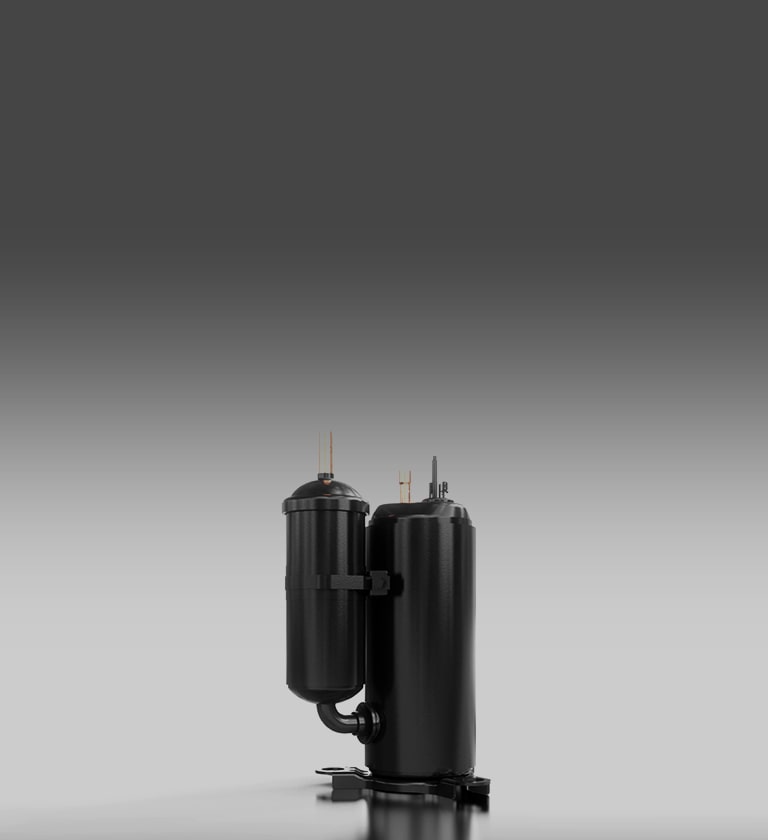-
A new trend is emerging in residential air conditioners — end users do not just demand an efficient cooling device but a device that is quiet and noise-free too. Residential air conditioners are notorious for being noisy and disturbing sleep which is caused by the compressor in the outdoor unit.
Before, air conditioners were mainly used in scorching heat in summer, but now, the use of air conditioners is diversifying. The use of residential air conditioners throughout the year is becoming more commonplace than ever. End users are now using air conditioners not just during summer, but in spring and monsoon as well. With the rise in diverse usage patterns, air conditioner manufacturers are faced with multi-faceted challenges in satisfying customers. Among these, the most commonly faced problem is ‘noise’.


-
Compressors are considered the heart of any cooling system. The performance of a cooling system is highly dependent on a compressor’s efficiency and quality, making them the single most prominent feature in a cooling system.
We at LG have scrutinized and worked relentlessly to improve the performance issues and abnormal noise issues in compressors to provide our clients with better air conditioners. As a result of years of research and innovation, LG has come up with a silver bullet solution to all these problems, which we will be discussing in the later part of this article.
-
Q. What are the differences between an inverter and a non-inverter air conditioner?
Residential air conditioners can largely be divided into two types: non-inverter and inverter air conditioners.
The difference between the inverter air conditioner and the existing non-inverter air conditioner is the compressor’s speed. A non-inverter compressor has a fixed-speed compressor, whereas an inverter air conditioner has a variable speed compressor, implying that in a non-inverter compressor, the compressor's speed remains fixed, but in an inverter air conditioner compressor’s speed fluctuates.
In the case of a non-inverter, the compressor rotates 60 times per second regardless of the target temperature setting . Let’s assume that it is 28℃ indoors, and you have set the cooling temperature to 18℃ for faster cooling. In this case, despite the huge difference between indoor temperature and target temperature, the non-inverter air conditioner still cools at its usual speed due to its fixed speed compressor, which generally compresses at a speed of 60RPS (Rotations Per Second). Hence, the air conditioner takes time to reach the desired temperature reducing its efficiency.
On the other hand, in the case of an inverter air conditioner, the compressor can increase its speed for faster cooling, shortening the time taken to reach the desired temperature.
Similarly, assuming that the room temperature is 20℃, and the target temperature is set at 18℃. The non-inverter compressor still compresses at a speed of 60RPS to cool the room only by 2℃, which translates to unnecessary power consumption.
However, in the case of an inverter air conditioner, if a cooling of about 2℃ is required, the compression speed of the compressor is lowered automatically to save power consumption.


-
Their role is to separate high-pressure and low-pressure refrigerants in the compression chamber. When the rotational speed is lowered, the movement of the vane becomes unstable and it repeatedly falls and touches the roller.


-
When the vane is separated from the roller and the barrier between high-pressure and low-pressure refrigerant diminishes, resulting in contact between the two. As a consequence, the refrigerant required in the air conditioner system cannot reach high pressure and the performance of the system declines, also generating abnormal noises when the vane and roller collide with each other.
-
Q. How can we solve the noise issue in an air conditioner?
Recent studies have indicated that end-users are now focused on noise-free ACs more than ever. LG Hinged-Vane Rotary Compressor is LG’s answer to not just abnormal noises but also low-speed performance issues in residential air conditioners.
LG Hinged-Vane Rotary Compressor was born by assembling the roller and vane into a hinge-type structure, preventing separation between the roller and the vane that occurs through the low-speed operation of the rotary compressor.


-
As a result, the performance of the compressor is improved at low speed and vane jumping sounds are eliminated. Increased performance means lower energy consumption and higher savings for end users making it the silver bullet solution to all air conditioner related problems. LG Hinged-Vane Rotary Compressor augments the function of air conditioners and helps air conditioner manufacturers reach their goal of addressing end-user’s requirements. LG has accomplished this monumental task of manufacturing a compressor tailored for usage habits of air conditioner users.
We at LG Compressor & Motor believe that LG Hinged-Vane Rotary Compressor technology will help the HVAC industry bring utmost satisfaction to end users.
Products In This Article
-
"The information contained in the article is released by LG Electronics and may not be used for personal work. It may not be copied, reproduced, modified, decompiled, or reverse-engineered into any other work without prior permission from LG Electronics."
-
*Products and solutions may vary according to country and operating conditions.
Please click the 'INQUIRY TO BUY' banner below to contact LG Sales Team for further information on solutions and products.





